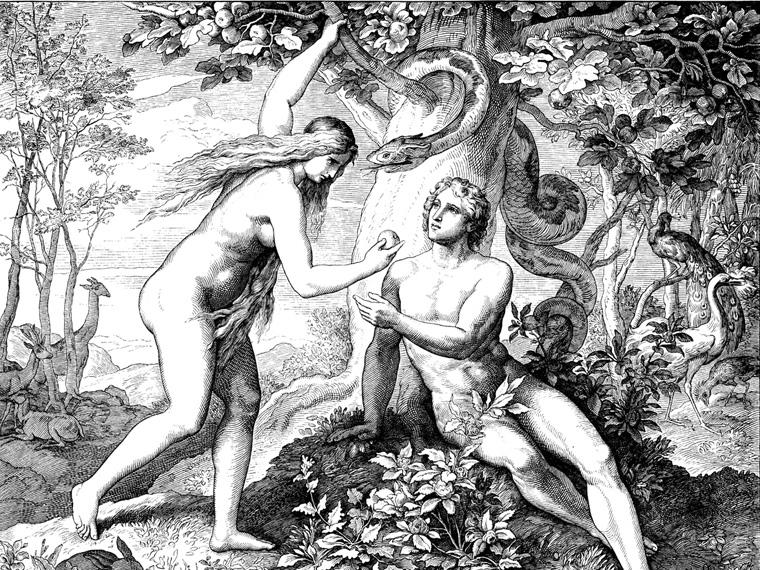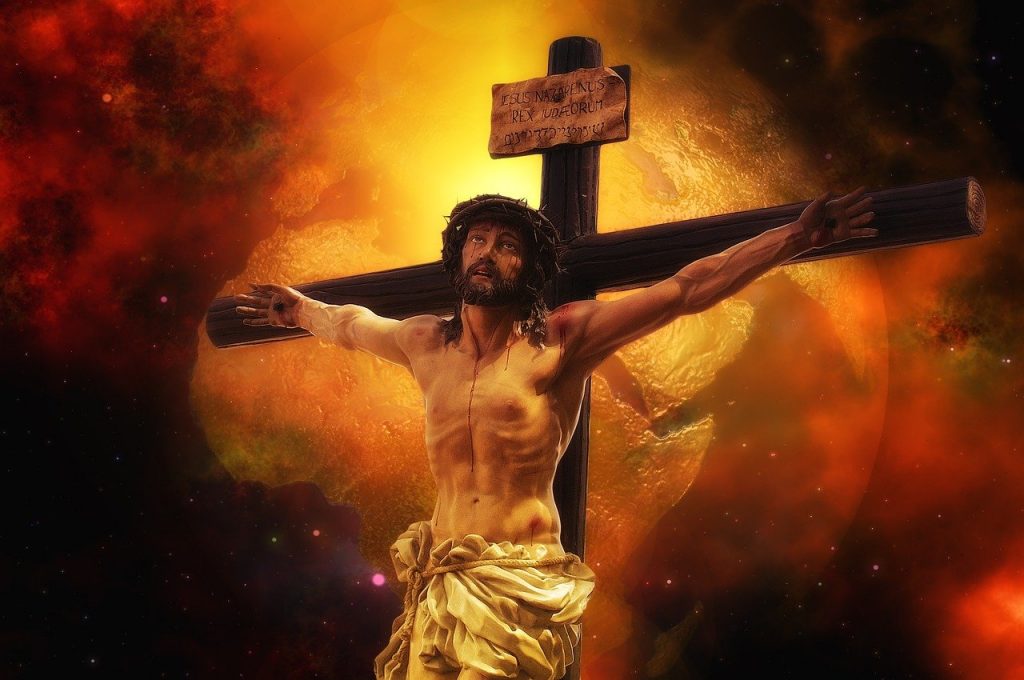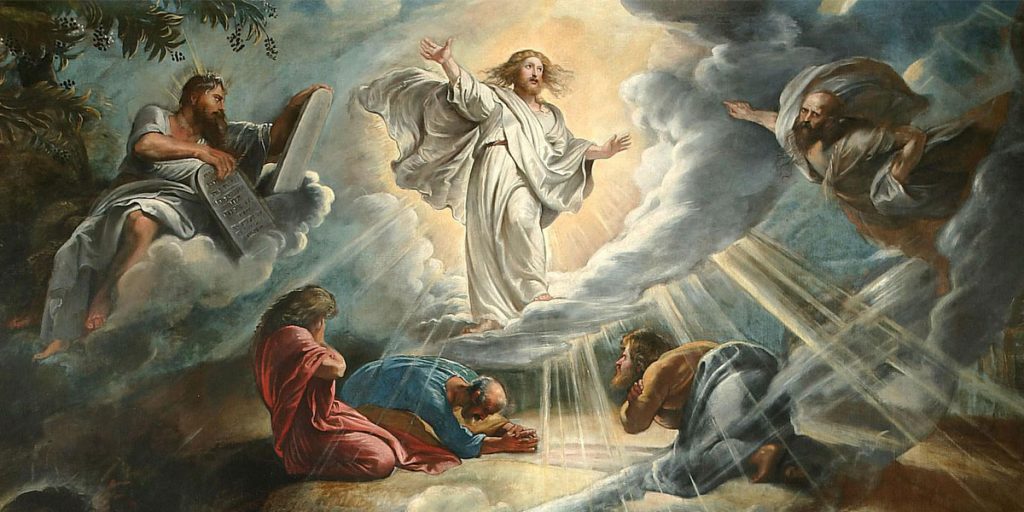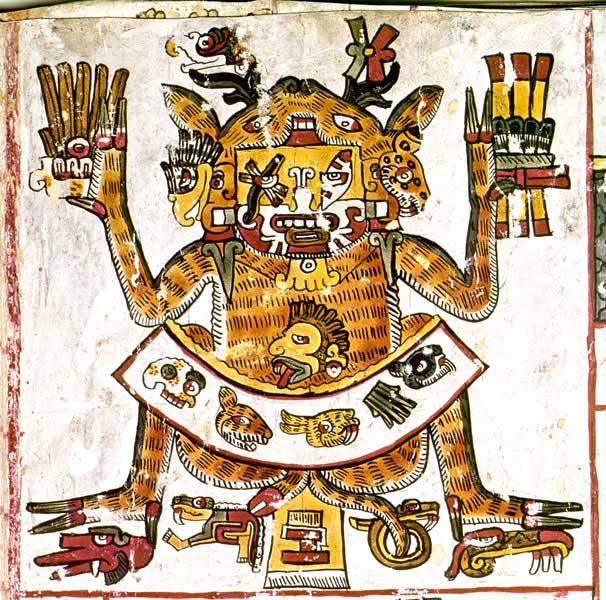- Introduction to the course of Public Chamber
Since Gnostic studies have progressed extraordinarily in recent times, no cultured person would fall today, as in the past, into the simplistic error of making the Gnostic currents arise from any exclusive spiritual latitude.
Although it is true that in any Gnostic system we must take into account its Eastern Hellenistic elements, including Persia, Mesopotamia, Syria, India, Palestine, Egypt, etc., we should never ignore the Gnostic principles perceptible in the sublime religious cults of the lndo-American Nahuas, Toltecs, Aztecs, Zapotecs, Mayas, Chibchas, Incas, Quechuas, etc, etc, etc.
Talking quite frankly and straightforwardly, we will say: Gnosis is a very natural function of the Consciousness, a “Philosophia Perennis et Universalis”.
Unquestionably, Gnosis is the enlightened knowledge of Divine Mysteries that are reserved for an elite. The word “Gnosticism” contains within its grammatical structure the idea of systems or currents devoted to the study of Gnosis.

This Gnosticism implies a coherent, clear, precise series of fundamental elements that can be verified through direct mystical experience:
- Damnation, from a scientific and philosophic point of view.
- The Adam and Eve of the Hebraic Genesis.
- The Original Sin and the fall from Paradise.
- The Mystery of Nahuatl-Lucifer.
- The Death of the Myself.
- The Creative Powers.
- The essence of the SALVATOR SALVANDUS.
- The Sexual Mysteries.
- The Inner Christ.
- The Igneous Serpent of Our Magical Powers.
- The Descent into Hell.
- The return to Eden.
- The Gift of Mephistopheles.
Only the Gnostic doctrines that entail the above mentioned ontological, theological and anthropological bases are part of the genuine Gnosticism.
Pre-Gnostic is that which shows in a concrete, evident and specific way any trait that may also be detected in Gnostic systems, but in which this aspect is integrated into a conception entirely alien to revolutionary Gnosticism. It is a thinking which certainly is not and yet is Gnostic.
Protognostic is any Gnostic system in an incipient, germinal state; these are movements directed by an attitude very similar to the one that characterizes definite Gnostic currents.
The adjective Gnostic can and even must be applied intelligently to conceptions that are related in one way or another to Gnosis or to Gnosticism.
Undoubtedly, the term “Gnosticizing” is very close to Pregnostic in its meaning, for it is truly related, ‘stricto sensu’, to intrinsic aspects that bear certain similarity with Universal Gnosticism, but which are integrated in a current not defined as Gnosis.
Having these semantic explanations firmly established, now let us define Gnosticism absolutely crystal-clear.
It is not superfluous to clarify emphatically in this treatise that Gnosticism is a very intimate, natural and profound religious process; authentic in-depth esoterism, unfolding from instant to instant, with very individual mystical experiences and with its own Doctrine and rites.
It is an extraordinary doctrine that fundamentally takes a mythical and sometimes mythological form.
It is ineffable Magical Liturgy with vivid illustration for the Self’s Superlative Consciousness,
Unquestionably, Gnostic knowledge always escapes the analyses that are normal in subjective rationalism.
The correlate of this knowledge is the person’s infinite intimacy, the Self.
The Self’s reason to be is the same Self. Only the Self can know Itself. The Self, therefore, becomes Self-Known in Gnosis.
The Self, reevaluating and knowing itself, is Self-Gnosis; undoubtedly, the latter is in itself the Gnosis.
The Self’s Self-Knowledge is a supra-rational movement that depends on the Self, and which has nothing to do with intellectualism.
An impassable abyss exists between the Self and the “I” (Ego). That is why the Pneuma, the Spirit, re-cognizes itself and this recognition is an autonomous act, for which the intellectual mammal’s subjective reason turns out to be ineffective, insufficient, terribly poor.
Self-Knowledge, Self-Gnosis, implies annihilation of the “I”, as previous, urgent and unpostponable work.
The I, the Ego, is made up of additions and subtractions of subjective elements, inhuman and beastly, which unquestionably have a beginning and an end.
Unfortunately, the Essence, the Consciousness, is immersed, trapped, bottled up inside the diverse elements that make up the Myself”, the Ego, and processes itself painfully according to its own conditioning.
The Essence, the Consciousness, awakens, becomes enlightened, is liberated through dissolution of the ‘I’; then, as a consequence or corollary, comes SelfKnowledge, Self-Gnosis.
Undoubtedly, legitimate revelation has its irrefutable bases in Self-Gnosis.

Gnostic revelation is always immediate, direct, intuitive, it radically excludes subjective intellectual operations, it has nothing to do with experiencing and assembling data that are fundamentally sensory.
Although it is true that intelligence or ‘Nous’, in its Gnosiological sense, can be the basis of enlightened intellection, it categorically refuses to fall into vain intellectualism.
The Ontological, Pneumatic or Spiritual characteristics of “Nous” (Intelligence) are perfectly clear and evident.
In the name of Truth, I solemnly declare that the Self is the only real existence, before whose transparency, ineffable and terribly Divine, this that we call I, Ego, Myself, is just outer darkness, wailing and gnashing of teeth.
Self-Gnosis, or the Self’s Self-Gnostic recognition, given the Anthropological versant of the Pneuma or Spirit, comes to be decisively an element of Salvation.
Knowing oneself is having achieved identification with one’s own Divine Self
Samael Aun Weor
To know that you are identical to your own Pneuma or Spirit, to experience directly the identification of cognizance with the cognizant, is what we can and must define as Self-Gnosis.
Ostensibly, this extraordinary disclosure invites us to die in ourselves so that the Self manifests itself in us.
On the contrary, to move away from the Self, to continue as Ego within the Heresy of Separateness, means to condemn us to submerged Involution in the “Hell-Worlds”.
This evident reflection leads us to the topic of Gnostic “Free Choice“. Unquestionably, a serious Gnostic is a chosen one a posteriori.
With the Gnostic experience, the sincere devotee can entirely achieve both knowledge of himself (or herself) and Self-Realization.
Self-Realization should be understood as the harmonious development of all the infinite human possibilities.
It is neither a matter of intellectual data distributed capriciously or of mere insubstantial talk in an ambiguous chat.
Everything we are saying in these paragraphs should be appreciated as genuine experience, real and vivid.
In the Gnostic currents, the Dogma of Orthodox predetermination – which would bind us miserably within a narrow conception of the Anthropomorphic Deity – does not exist.
God is Theos in Greek, Deus in Latin and div or deva in Sanskrit, a word that translates as “angel” or “angels”.

Even among the most conservative Semitic peoples, the most ancient God of light –“EL” or “ILU” – appears (in the first chapters of the Genesis) in its synthetic plural form of ELOHIM.
GOD is not any Human or Divine individual in particular, God is Gods. It is the “Army of the Voice”, the “Great Word”, the “Word” in the Gospel of Saint John, The Creator Logos, Perfect Multiple Oneness.
To know and realize oneself on the horizon of infinite possibilities implies to join or rejoin the ‘Creative Host of the ELOHIM’.
And this is the Gnostic’s certainty, the Self has disclosed itself completely to him (or her) and its marvelous splendor radically destroys any illusion.
The opening of the Pneuma or Divine Spirit of man has total soteriological content.
If we have the Gnosis of the Great Ancient Mysteries, it is because some very holy men managed – thanks to their doctrinal loyalty – to approach the Self’s revealing dynamism.
Without previous information on Gnostic Anthropology, it would be more than impossible to study rigorously the different anthropological pieces of the Aztec, Toltec, Maya, Egyptian cultures, etc, etc, etc.
In matters of profane anthropology (excuse me for the similarity), if we want to know the results, let us leave a monkey, or an ape, completely free in a laboratory and then watch what happens.
Mexican codices, Egyptian papyri, Assyrian bricks, Dead Sea scrolls, strange parchments, as well as certain very ancient temples, sacred monoliths, old hieroglyphs, pyramids, millenary sepulchers, etc, in their symbolic depth, offer a Gnostic sense that definitively escapes literal interpretation and which has never had an exclusively intellectual explanatory value.
Speculative rationalism miserably impoverishes Gnostic language instead of enriching it, since the Gnostic accounts, whether written texts or artistic allegories under any form, are always directed toward the Self.
And it is in this extremely interesting ‘Semi-Philosophic’ and ‘Semi-Mythological’ language of Gnosis that a series of extraordinary invariants appear, symbols with a transcendental esoteric content, which silently say a lot.
Divines and humans know well that silence is wisdom’s eloquence.
The characteristics that clearly specify the ‘Gnostic Myth‘, and which mutually complement each other, are the following:
- The Gnostic Supreme Divinity can be characterized as “Agnostos Theos”
- The Supreme Divinity.
- Emanation and fall of the Pleroma
- Architect Demiurge.
- Pneuma in the World.
- Dualism.
- The Savior.
- The Return.
The Gnostic Supreme Divinity can be characterized as “Agnostos Theos”, the Absolute Abstract Space, the Unfathomable or Unknown God, the One Reality from which the Elohim emanate at the dawn of any universal creation.
It should be remembered that Paranishpanais the Summum Bonum — the Absolute — and, therefore, the same as Paranirvana.
Later on, all that seemingly exists in this Universe will come to have real existence in the state of Paranishpana.
Unquestionably, the human cognition faculties would never be able to go beyond the Cosmic Empire of the Female-Male Logos, The Creator Demiurge, The Army of The Voice (The Word).
JAH-HOVAH, the secret “Father-Mother” of each of us, is the authentic Jehovah.
JOD, as a Hebrew letter, is the “membrum virile” (the masculine principle). Eve, Heve, the same as Hebe, the Greek Goddess of Youth and Heracle’s Olympic Bride, is the “Yoni”, the Divine Chalice, the Eternal Feminine.
The Divine Rabbi of Galilee, instead of worshipping the anthropomorphic Jehovah of the Jews, adored his Divine Male-Female (Jah-Hovah), the inner Father-Mother.
The Blessed One, crucified on the Mount of the Skull, cried with a Great Voice saying: “Father, into thy hands I commend my Spirit”. Ram-Io, Isis, his Divine Mother Kundalini, accompanied him along the Via-Crucis.

All nations have their first God, or Gods, as Androgynous; it could not be in any other way, since they used to consider their distant primal ancestors, their double-sex forebears, as Divine Beings and Holy Gods, just as the Chinese do today.
Indeed, the artificial conception of an anthropomorphic Jehovah who is exclusivist, independent of his own work, sitting up there on a throne of tyranny and despotism, throwing lightning and thunder onto this miserable ant’s nest of humans; is the result of ignorance, mere intellectual idolatry.
This erroneous conception of the Truth has unfortunately taken possession of both the western philosopher and the religious person who is affiliated to any one sect completely lacking in Gnostic elements.
What the Gnostics of all times have rejected is not the unknown God, One and always present in Nature, or Nature In abscondito, but the God of Orthodox Dogma, the horrific Vengeful Deity of the Law of Talion (an eye for an eye, a tooth for a tooth).
The Absolute Abstract Space, the Unknowable God, is neither a limitless void nor a conditioned fullness, but both things at once.
The Gnostic esotericist accepts revelation as coming from Divine Beings, the Manifested Lives, but never from the One Life Unapparent.
The Unknowable Deity is the Absolute Abstract Space, the rootless Root of all that has been, is, or has to be.
This Infinite and Eternal Cause is, of course, devoid of any kind of attributes, it is negative light, negative existence, beyond the reach of any thought or speculation.
Valentin’s Gnostic Myth, that specifically shows us the Thirty Pleromatic Aeons, mysteriously emerging from the Absolute Abstract Space in successive emanations, ordered in perfect couples; can and must serve as archetypal model of a Monistic Myth that in a more or less obvious form is present in every definite Gnostic system.
This transcendental point of the First Progeny (Proto-prole), is classically oriented towards a ternary division of the Divine: The Agnostos Theos (The Absolute), The Demiurge, The Father, etc.
The Divine World, the glorious domain of the Pleroma, came out directly from the Negative Light, the Negative Existence.
Finally the Nous, Spirit or Pneuma, contains in itself infinite possibilities that can unfold during (the cosmic) manifestation.
In between the extraordinary limits of Philosophy’s To Be and Not To Be, there was produced the multiplicity or fall.
The Gnostic Myth of the Fall of Sophia (Divine Wisdom), allegorizes solemnly this terrible disruption in the bosom of the Pleroma.
Desire, fornication, to want to stand out as Ego, brings about disaster and disorder, it produces an adulterated work that undoubtedly is left outside the divine realm, even though in it remains trapped the Essence, the Buddhata, the human creature’s Psychic Material.
The impulse towards the Unity of Life, free in its motion, can become diverted towards the I and in the separation forge a whole world of bitterness. In all ancient nations, the fall of degenerate man is the basis of Theology.
According to Philolaus, the Pythagorean (fifth century BC), ancient philosophers used to say that the Psychic Material, the Essence, was buried in the I, like a tomb, as punishment for some sin.
Plato testifies to this: that such was the Orphic’s Doctrine, and he himself professed it.
Inordinate desire, disruption in the regime of emanation, leads to failure.
To want to distinguish us as Ego, always sparks off disorder and the fall of any angelic rebellion.
The author of the world of shapes, is actually a mystical group of Male-Female Creators or Double Gods, such as Tlaloc, the God of rain and lightning, and his wife Chachiuhtlicue, She of the Jade skirt, in the Pantheons of the Mayas, Aztecs, Olmecs, Zapotecs, etc, etc, etc.
In the word Elohim, we find a transcendental key that invites reflection.
Certainly, Elohim is translated as God in the various authorized and revised versions of the Bible.
Not only from the esoteric point of view, but also linguistically, it is an uncontrovertibly fact that the term Elohim is a feminine noun with a plural masculine ending.
The correct translation of the noun Elohim in its strict sense is Goddesses and Gods.
“And the Spirit of the Male and Female Principles was hovering over the surface of what was shapeless, and creation took place”.
Unquestionably, a religion without Goddesses is halfway towards complete Atheism.
If we truly want perfect balance in psychic life, we need to worship Elohim (The Gods and Goddesses of ancient times), and not the Anthropomorphic Jehovah rejected by the Great Kabir Jesus.
The idolatrous cult of the anthropomorphic Jehovah instead of Elohim, is certainly a powerful impediment to achieving supra-normal conscious states.
Instead of laughing skeptically –as profane anthropologists do– before the depictions of Gods and Goddesses of the diverse Pantheons, Aztec, Maya, Olmec, Toltec, Inca, Chibcha, Druidic, Egyptian, Hindu, Chaldean, Phoenician, Mesopotamian, Persian, Roman, Tibetan, etc, etc, etc, Gnostic anthropologists drop to our knees at the feet of those Divinities, because we recognize in them the Elohim Creator of the Universe. ‘He who laughs at what he does not know, is on his way to become an idiot.’
The deviation from the Creator Demiurge, the antithesis, what is fatal, is the inclination to Egoism, the real origin of so much bitterness.
Undoubtedly, the egotistical consciousness is identified with Jahve who, according to Saturninus of Antioch, is a fallen Angel, the Genie of evil.

The Essence, the Consciousness, bottled up in the I, painfully processes itself within time, by virtue of its own conditioning.
The situation –certainly not very pleasant– incessantly repeated in the Gnostic accounts of the ‘Pneuma’ cruelly submitted to the powers of the Law, to the World and to the Abyss, is too evident to insist on it here.
It is evident that the “Intellectual Mammal” mistakenly called Man is too feeble and disconcertingly helpless to rise from the mire of the earth without Divine aid.
Divine Breath can reinstate us in the Truth, There is a vulgar proverb that goes like this: God helps those who help themselves, that is, praying to God and working hard.
Only the Igneous Ray, imperishable, hidden in the cold, dark and shapeless substance, can reduce the Psychological I to cosmic dust in order to free the Consciousness, the Essence.
We declare with ardent words: only Divine Breath can reinstate us in the Truth, nevertheless, this is only possible by conscious work and voluntary suffering.
Specific possession of Gnosis is always accompanied by a certain attitude of strangeness or surprise at this illusory Mayavic World.
Genuine Gnostics want a definitive change, they feel intimately the Self’s secret impulses, hence their anguish, rejection and embarrassment at the diverse inhuman elements of which the I is made up.
They, who yearn to be lost in the Self, bear affliction and abhorrence of the horrors of the Myself.
To contemplate oneself as a moment in totality is to know oneself to be infinite, and to reject with all the Self’s might the sickening Egoism of separateness.
Two psychological states open before a definite Gnostic:
A) That of the Self, which is transparent, crystal-clear, impersonal, real and true.
B) That of the I, which is a collection of psychic aggregates that personify defects, whose only reason to exist is ignorance.
Higher I and Lower I are just two sections of one same thing, different aspects of the “Myself”, diverse facets of the Infernal.
The sinister, diabolic and tenebrous I — whether higher, middle or lower — is, therefore, continual addition, subtraction and multiplication of inhuman psychic aggregates.
The so-called Higher I is certainly a trick by the “Myself”, an intellectual ruse by the Ego seeking ways out in order to continue existing, a very subtle form of self-deceit.
The I is a horrifying work of many volumes; the result of countless yesterdays, a fatal knot that we have to undo.
Egotistic self-praise, worship of the I, overestimation of the Myself, is Paranoia, idolatry worst of all kinds.
Gnosis is revelation or disclosure, refined aspirations, conceptual synthetism, maximum achievements.
Ostensibly, both in essence and in accident, GNOSIS and GRACE are identifiable phenomenologically.
Self-Gnosis, the Being’s Intimate Self-Realization, would be more than impossible without Divine Grace, without the extraordinary help of the Sacred Breath.
To be Self-Saved is appropriate, and this requires full identification of what saves with what is saved.
What is Divine, which dwells deepest in the Soul, the authentic and legitimate cognizing faculty, annihilates the Ego, and absorbs, in its PAROUSIA, the Essence and saves it in total enlightenment. This is the theme of the SALVATOR SALVANDUS.

A Gnostic who has been saved from the waters has closed the cycle of infinite bitterness, has trespassed the limit separating the ineffable realm of the Pleroma from the interior regions of the universe, has bravely escaped the Demiurge’s Empire because he or she has reduced the Ego to cosmic dust.
The passage through the various worlds, the successive annihilation of the inhuman elements, affirms this reinstatement in the Sacred Absolute Sun and, then, turned into terribly Divine creatures, we pass beyond good and evil.
Samael Aun Weor
Subscribe to our news, promotions and getting started lessons!



